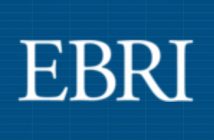To put you at ease, the adjacent graphic and comparative lists of leadership traits is not meant to be a veiled attempt at yet another “leadership model.” If you are like me, you are tired of seeing more books and lists around, “the ten essential characteristics of a good leader” or perhaps “the ten most common pitfalls of leaders today.”
Although we could debate various leadership models to the end of time, I believe it would be more beneficial to share conversations with each other, as leaders, about our beliefs, struggles, victories and failures so we can become, if we choose, better leaders.
Your second concern might have to do with the question, “what the heck does vulnerability have to do with your best interests as a leader?” Indeed, vulnerability brings out in all of us feelings of uncertainty, exposure to harm and perhaps being at risk emotionally. But leadership is first and foremost about relationship and authentic and quality relationships call for us to extend ourselves to one another, or in the case of leadership, to a group of people and that requires of us a measure of risk.
So what do we do with this apparent dilemma regarding vulnerability. Unfortunately, many of our cultural beliefs fail to provide much help. We are often called as people and especially as leaders to strive for perfection, to always be competent, to display confidence even when we are not, to never let them see you sweat, to be decisive, to get results quickly and often, to outsmart other people or perhaps even bury the competition.
These cultural beliefs, or myths, however you choose, define the essence of being invulnerable, of wearing our masks on a daily basis, of dividing our work lives from our personal lives and wondering after a while, why they seem to be one and the same. You can lead from an invulnerable position and experience a degree of success but at what cost to you personally and to those you have been given the privilege to lead? That is what, in part, this conversation is about.
Although I have believed for years about the relevance of vulnerability to authentic leadership, it seems during the past half-decade or so it is finally coming into the forefront and people are beginning to take notice and perhaps dive deeper to discover unrealized strengths. The best person I can point you to on this subject is perhaps Dr. Brene’ Brown, a research professor in the school of social work at the University of Houston. Brene’, a self-described former “control freak” began doing research over a decade ago attempting to discover the differentiating factors between people who had “high connectivity” in relationship vs. those that did not. This started from the premise that connection is what truly gives purpose to our lives; it’s why we’re here, it’s in our DNA; our birthright, if you will.
This is what she found through thousands of stories and hundreds of interviews. When she talked to people of love, belonging and connection, they often talked about heartbreak, being excluded and disconnection. Brown also goes on to describe the tendency in our society to “numb” further vulnerability exposure and possible disappointment by making everything uncertain, certain (no real discourse); by pretending what we do has no impact on others, through “perfecting” ourselves and possibly numbing via addictive behaviors. She goes on to relate how we can forfeit experiencing more fulfilling relationships in our life and work by existing much more than we should in this “protective” mode.
Conversely, when she talked to people who she described later as “whole-hearted” she discovered people who truly believed they were “good enough” and had a strong sense of love and belonging. They also displayed courage, authenticity and compassion. And yes, they also experienced vulnerability as sometimes painful but they also realized that what made them vulnerable also brought them true joy, helped make them more creative, brought more positive people into their lives and helped make them more successful. They saw vulnerability as part of life (neither positive nor negative) and not something to be avoided (See Brown’s Ted Talks and Blogs).
So in case we are thinking, at this point, that displaying vulnerability as a leader is about making everyone feel good and whole, singing Kumbaya on Friday afternoon or leading cheers on Monday morning, let’s put that to rest. In my view, leadership is simply about evaluating the quality of results achieved, the impact we have had on the people we served, the opportunities of growth we provided to others, and the positive legacy, or lack thereof, we have left behind.
With that in mind, let’s look at some of the relationships between the lists of what might be termed typical(and often positive) leadership traits on the left of the diagram to an example of a corresponding vulnerability leadership trait to the right. Please notice there is a PLUS sign between each sample comparison. Let’s also stress again that this is meant to be conversation starter and not proffering another leadership model. It is about you and me and our leadership potential and what we often, or at least sometimes, leave on the table to the potential detriment of ourselves and others.
I don’t think anyone would argue that we want leaders with some measure of expertise in their field and that they display a certain confidence to lead. We are also pleased when the leader we hire is an articulate communicator and is passionate about the opportunity in front of them. We also like our potential leader to be decisive, extremely dedicated, demonstrate an ability to successfully motivate others and persevere through difficult challenges.What happens though when the so called expert leader is not willing to also learn from others? What does that do to creativity and innovation? It’s great to have expertise but leading by the “I know best mentality” over time is choosing to lead from a state of invulnerability.
All of us want confidence in our leaders but when it makes a turn to arrogance it becomes, over time, a mask for a lack of confidence. Confidence balanced by a healthy portion of humility is perhaps one of the best attributes of leaders who often have much better success in harnessing the energy of the people they are leading. Leading from a false sense of confidence is choosing to lead from a state of invulnerability.
Leaders who are articulate communicators often bring advantages to the organizations they are leading. What happens though, over time, if the vision and promises of the leader is not producing positive results? What if we see a lack of congruence between their communication and subsequent leader behavior? In the end, if the leader does not possess good listening skills and is not willing to learn from feedback, their communication skills become a disadvantage, not an advantage.
Some of the strongest leaders I know lead from building consensus as a part of their decision making process. This does not take away from their responsibility to render decisions it only adds to their success as a decision maker. What happens when decision makers hold their decision making process too close to the vest, or with a chosen few, and fail to go down into the workplace and ask the opinions of those actually doing the work? By not taking measured risks with your people to invite them into your decision making process, everyone loses.
Being a strong motivator of your people is a great asset as a leader. What I often see though is motivation via fear that may obtain compliance but misses the greater commitment from your people you gain when you successfully inspire them. Through authentic inspiration, you also achieve a more self-governing work culture that is more advantageous to your bottom line.
I invite us to continue this conversation in 2014 right here in Central Oregon about the relationship between leadership and vulnerability. Might we be able to unlock more of our leadership potential? Let’s also have dialogue about what the current research says about high employee engagement and high productivity and all the metrics you want to be high and all the risk management ones you want to be low. We might even want to share some stories of local leaders and organizations that are experiencing a different leadership journey, all with the same challenges we all face but yielding some different and more positive results.
Stay tuned and let me know if you would like to participate!
Jim Lee can be reached at jim@invitexcellence.com or 541 771 6184





